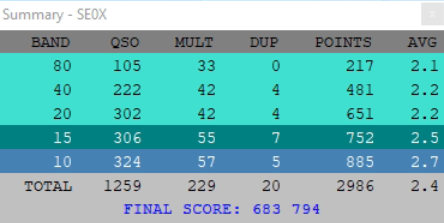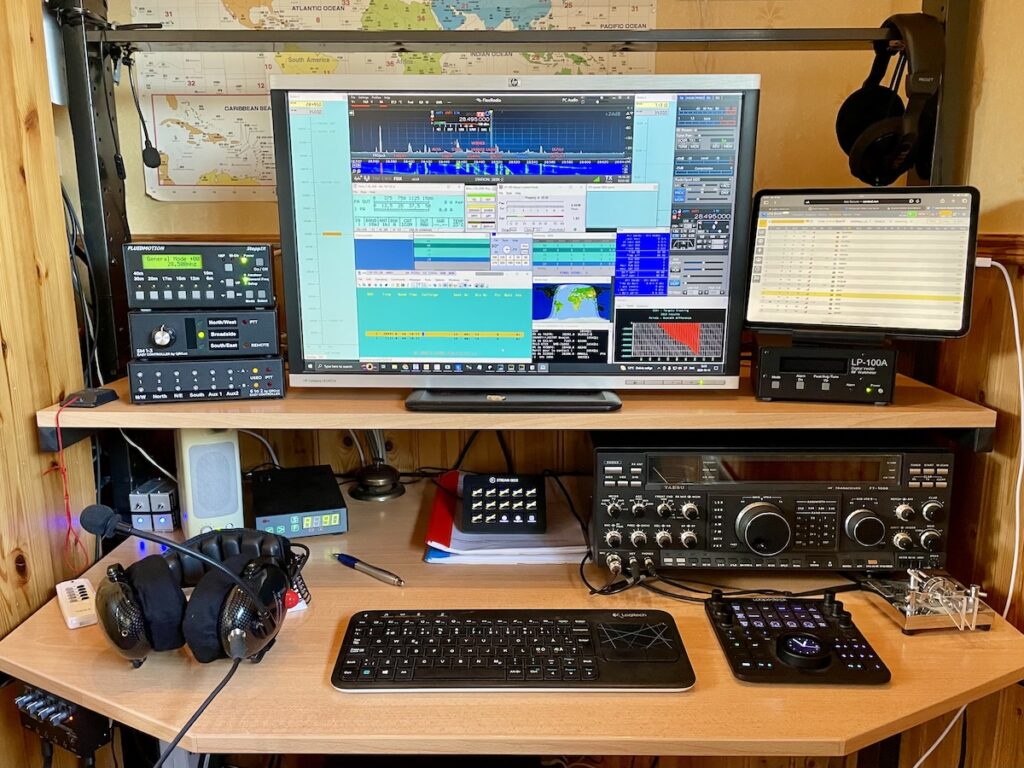Clean Desk Policy in SAC SSB 2023

Well, this year’s SSB contest was the grand debut of my shiny, new SE0X shack! I set a daring goal for myself: to outshine my high score from way back in 2013. So, did I reach for the stars, and what’s the scoop on the hot, new “clean desk policy” in the shack? Buckle up because I’m dishing out all the juicy details in this blog post!
Participating in SAC SSB was a truly enjoyable experience! Although my goal was to surpass my prior high score, I unfortunately came up just 1436 points shy. A bit disappointing, but the overall feeling upon crossing the finish line was still quite positive. The 10 and 15-meter bands were in excellent condition. I began on 15 meters but swiftly switched to 10 meters, where I logged around 250 QSOs on Saturday afternoon. My focus was on 10 and 15 meters, primarily logging North American contacts into the evening, with a few stints on 20 meters resulting in mostly European contacts. I assume that most DX stations had moved higher as the sun played its role.

The 40-meter band worked well in the evening, although there was less DX activity compared to the higher bands. 80 meters had weaker signals, primarily consisting of European contacts and only a handful of DX stations. I spent a significant amount of time alternating between 40 and 80 meters, occasionally resorting to dueling CQ calls. When the rate began to slow down at 01:00 UTC, I decided to catch a few hours of sleep.
On Sunday, both 15 and 10 meters were bustling with Japanese stations. Dueling CQ calls became more frequent, and “micro-runs” with about 10 stations at a time became the standard practice. Although the rates were slower, almost every contact was worth 3 points as DX. At 09:00, I decided to try 20 meters and had a decent run. It was crucial to pick up some of the 20-meter multipliers I missed when aiming for higher rates on 10 and 15 meters earlier in the contest.
The peak rates reached 120 QSOs per hour from 15:00 to 17:00 on Saturday afternoon. The United States dominated the log, accounting for 22% of the total contacts. On 10 meters, nearly half of the log (48%) consisted of US stations, with Germany in the second spot and the Netherlands in third place. On 10 meters, Japan secured the second position, with Canada as the third most contacted country.
Here are the callsigns logged on all bands:
CR2X
CT3BH
DB7BN
DD1MBM
DL50DAH
DL8AAE
EA1X
ER3CT
HA3NU
HB9BC
I2GPT
IK4DCX
IT9YVO
IW0DJC
KA1IS
LY4L
LY5W
PI4COM
PY8WW
UZ7M
Thanks to all of you who worked me. The higher bands were in top shape, making for a fantastic weekend!
Now, let’s talk about that “Clean Desk Policy” you might be wondering about.
Over the years, my goal wasn’t just to expand the station’s capabilities; I also devoted time to simplifying the setup. Through clever, step-by-step upgrades, I reduced the cable clutter and eliminated the maze of switch boxes that once crowded my cramped shack. The most significant improvement came when I switched to SDR transceivers in 2015. The virtual audio and serial cables, coupled with the new SDR transceivers featuring LAN connectivity, allowed me to eliminate a considerable amount of cabling.
The real game-changer was the transition to FLEX a year ago, which significantly improved the SO2R setup. The MicroHAMs SO2R controller with its web of cables became obsolete, as SO2R switching was now entirely handled by the FLEX-6600 and its SmartSDR control software. The FLEX-6600, equipped with two Spectral Capture Units (SCUs), effectively became two transceivers in a single cabinet, further enhanced by contest-grade bandpass filters, making it ideal for SO2R contesting.

With the FLEX-6600 and its capabilities, most of the hardware that used to clutter the operating desk was no longer necessary. The logical next step was to move the transceiver, filters, and amplifiers away from the desk to create a cleaner workspace. As of this contest season, the only items remaining on the desk are the antenna controllers and power meter (and the FT-1000D, which I don’t use for contesting). This change also offers the added benefit of rearranging the desk to allow the operator to stand up occasionally during longer shifts or non-stop operation.
All of these improvements have made the contest experience significantly more comfortable and enjoyable. The “clean desk policy” is here to stay!

1 Comments
Jesse
impressive “clean desk policy”